“We are our stories. We tell them to stay alive or keep alive those who only live now in the telling.” Niall Williams*
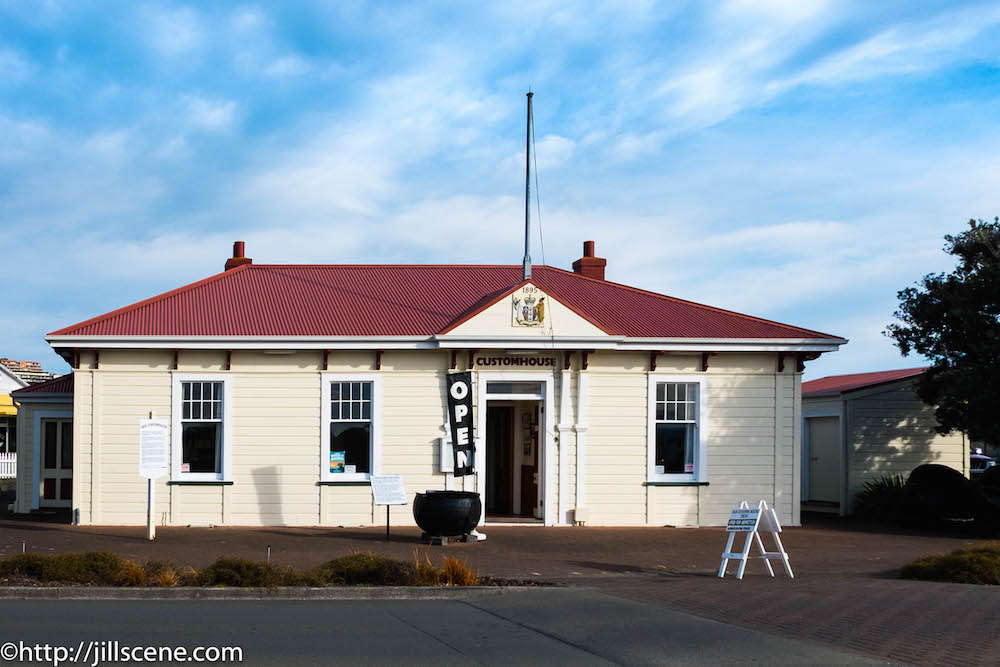
CustomHouse, West Quay, Ahuriri, Napier
This place, my friends, is a photographer’s delight, a community resource, and a Tardis for those with a historical bent. It’s the old Customhouse on West Quay, in Ahuriri. Ahuriri is one of the oldest suburbs in Napier, often referred to as The Port, for obvious reasons. I’ve walked past the Customhouse hundreds of times, my eye usually on the activity in the harbour, immediately opposite, and remembering my stories, telling them to John – again.
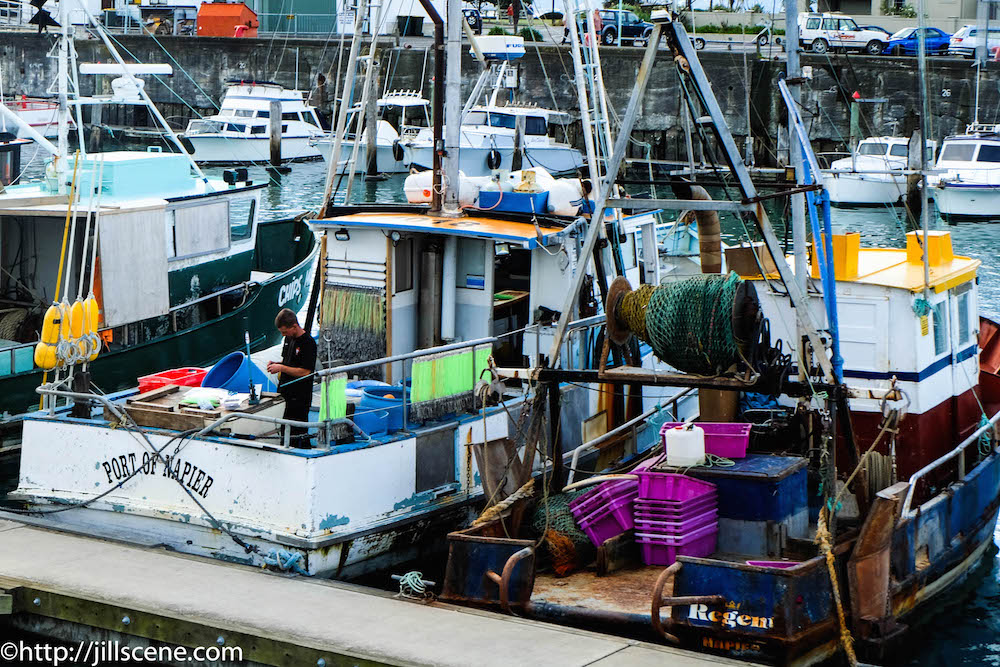
Inner harbour, immediately opposite the CustomHouse
He may have heard them before. Often.
Hey, it gets like that, we’ve been together a long time.
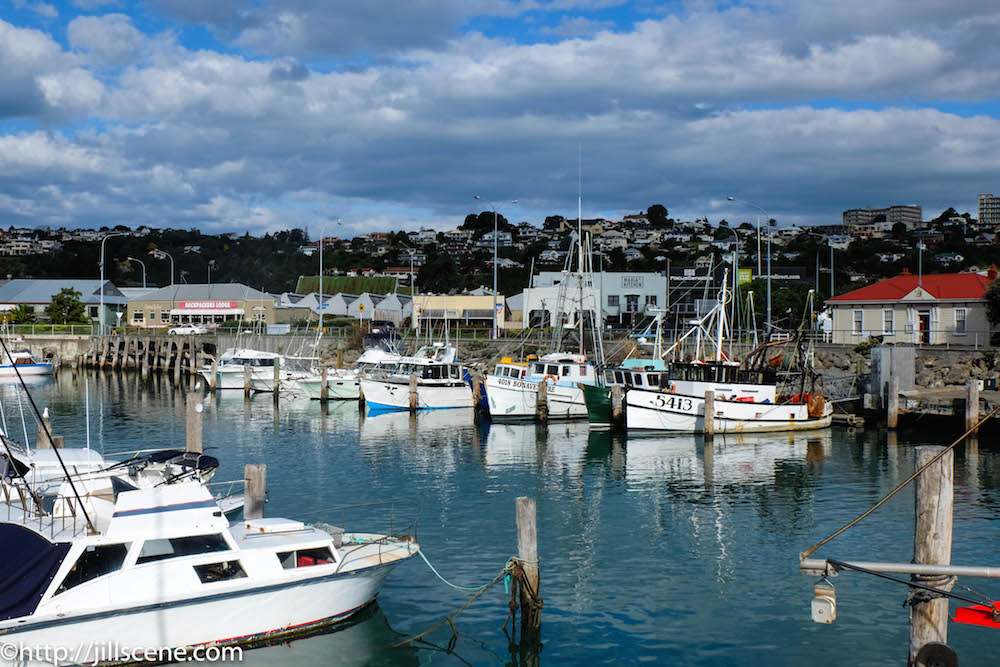
Inner Harbour, Napier. The Customhouse is on the left, and near the old wooden wharf is the site of the sand gathering expedition.
My story is usually the same one, the one about that time. The time when Dad brought me here to collect sand for my very first sandpit. I followed him down some steep and rickety steps to what’s now the bottom of the harbour. I hadn’t been around long enough to be worried about all things rickety.
I was excited, thrilled to be out and about, on an adventure with my father. I was very small. My dad was young and strong – he must have been to lug the sand back to street level! And, I was getting a sand pit.
That’s it, that’s the whole story. Nothing went wrong. Just a daughter and her Dad, more than half a century ago, collecting sand from a place that’s still there, if rather wet.
The story always ends the same way. I look down at the water and remark to whoever’s around, usually John: Things change.
And then John smiles and he glances over at the family fishing from the wharf. There’s always at least one. And he tells his story about this place. About how he brought our boys here to fish. They caught spotties. Remember, he says, that time you cooked our catch. I do. I got the recipe from his mother. Those spotties weren’t much chop – too many bones.
Sometimes you came with us, he says and he grins.
Yeah, I say, that made things really fun.
Because, you know, by then a few decades had gone by and I knew to be worried about all things rickety. Especially above moving water. I may have mentioned this problem before.
Even now, while I’m taking photos and we’re swapping stories, I’m not getting close to the edge of this wharf. No way. Not on your Nellie. There’s water down there!
Yeah, it was fun, I say. Thinking to myself, sometimes being a mother was just plain terrifying. The things you have to do for your kids: pretending not to be scared and holding back from pulling them back.
To be fair, they were very little. They hadn’t learned to swim. So what did I do? I sat behind them, of course, ready to grab them at the first sign of a stumble.
All right, so that’s a lie.
I was actually holding on to their shirts but ever so lightly.
You didn’t notice, N & B, did you? Not really. And if anyone says I was clutching – that’s an exaggeration.
These days I’d do it differently. These days, I’d go for the worry free option. I’d make them wear life-jackets while they fished from the wharf.
Kidding, just kidding.
With all that personal history within a few metres it’s been easy to overlook the Customhouse, when we’re out on our walks. And it’s not usually open. But on Sunday, it was, and we had the time.
Crossing that threshold, it was like walking back into my parents’ lives. This place is filled with memorabilia from the early years of the Port/Ahuriri. Dad grew up here. He and Mum and spent the early years of their marriage here.
And just like the Tardis, there’s room after room to be discovered; each packed with artefacts and photos and documents.
There’s a photo of the South Pond back when it was a pond and when there was a North Pond as well. These days South Pond is a large green park that gets really hot in summer. Walking across it in the heat of a summer afternoon was, and I’m sure still is, an ordeal. South Pond is also the place where my brother’s home-made kite broke free and got tangled in the power lines. At least that’s the story I was told. He might have a different version, history being what it is.
There’s a photo of the old wool stores, their jagged rooflines jutting into the air. These used to be everywhere, I say. They’re gone now, except for one or two that have been transformed into apartments, swanky apartments. There’s another, sadder photo, taken immediately after the 1931 earthquake. One I haven’t seen before. A stack of wool bales has collapsed. Several workers were killed. Those guys wouldn’t have stood a chance.
John never misses an opportunity to get the lay of the land. He’s pre-occupied by an old photo of a new bridge, trying to work out where it is, exactly. He points out the curve of the beach: That’s Westshore, he says. And he squints at the large tract of water and announces: That’s Pandora Pond. (It still does have water but it’s not actually a pond, it’s an estuary). I notice how few people there are in the photo, the absence of houses. But as John points out the landmarks what seemed foreign becomes remarkably familiar.
As if the photos aren’t enough, there’s all sorts of memorabilia, including: an old typewriter juxtaposed against a computer which you can use to explore Port Stories, a ship’s wheel,

Steering wheel from the steam trawler, Akina
lanterns, a lens from the Portland Island Lighthouse,
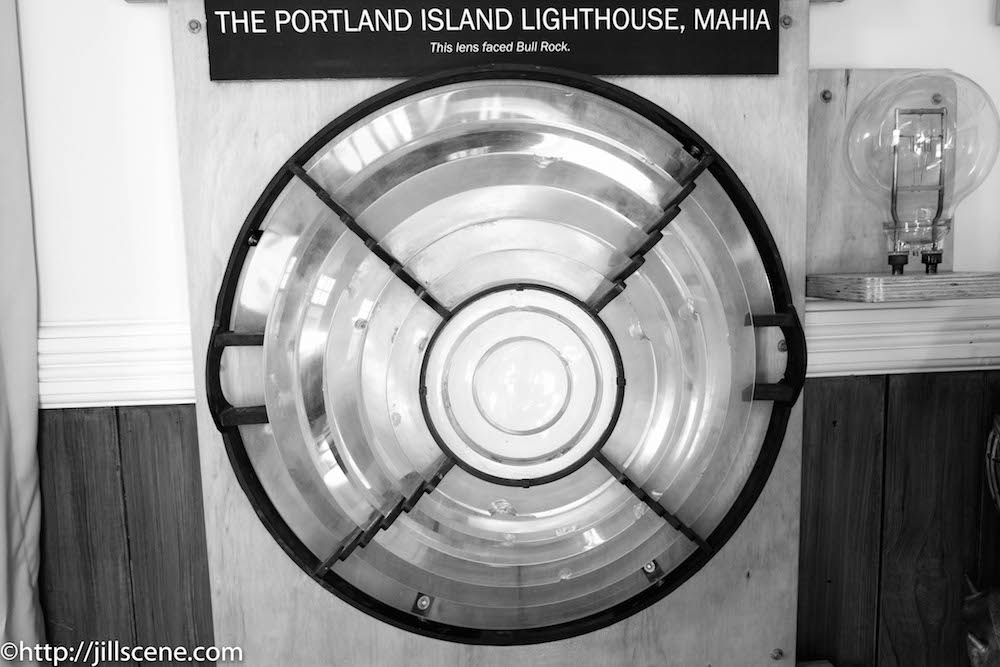
Lens from the old Portland Island Lighthouse
a diver’s helmet,

Apparently this helmet is being restored
a mould for a ship’s winch,
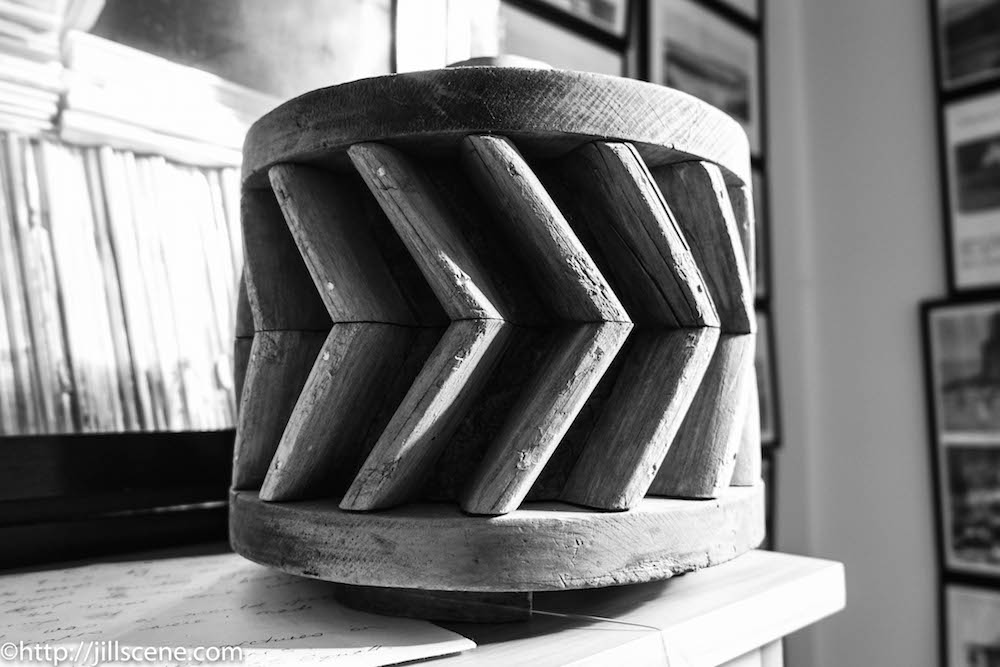
Mould for a winch, from the SS Squall – perfect name for a ship don’t you think?
and rows and rows of log books. These last list the arrivals and departures at Napier Port – each entry manually recorded. That’s what we did before computers. We wrote everything down.
Later, we drive along Pandora Road – the site of what was once the new bridge. Now, it’s one of the busiest routes in town, lined with caryards and retail outlets and cafes, all competing for attention from the stream of cars that go by. I get goosebumps. The past is still here. Even if we do things differently now.
Inspired by:
WP Photography Challenge: Inspiration
*from History of the Rain by Niall Williams which on the strength of this quote and the recommendation of a friend (Hi P) has been promoted to the top of my reading list.
Come on in and join the korero, tell me about your very first adventure …
Categories: Hawkes Bay, Off The Beaten Track in Aotearoa, On Life


A lovely family story Jill and the Customhouse looks so interesting with all the old memorabilia!
LikeLike
Was in New Zealand in March and fell in love with it. Your photos are stunning!
LikeLike
Hello Jackie, thanks for visiting and commenting on my blog. How wonderful that you enjoyed your time in New Zealand. March is the very best time to visit. Which part of the country did you visit?
LikeLike
We did Queenstown, Miford Sound, Rotorua, Franz Josef, and Auckland – wish we had made a longer trip!
LikeLiked by 1 person
They’re some of the most beautiful places here, Jackie. I’m going to the city of sails soon, myself.
LikeLike
And when you will be giving your stories to the Custom House? Do they collect more modern memorabilia and oral history ?
LikeLike
A lovely piece of story telling, Jill! I smiled in recognition at much of it, though our paths have never crossed. 🙂 Many thanks for your patience. I’m sorry I couldn’t include you last week but this post is worth waiting for 🙂
LikeLike
Oh, Jo, you’re very kind. I’m glad you enjoyed it.
LikeLiked by 1 person
Your remark, usually to John “Things Change.”
Jill change is a universal truth.
Yet is it wonderful sharing so much change together.
Sharing and caring for each other this post is beautiful. _/\_
LikeLike
Hello Jack, it is a universal truth, that’s for sure, one I seem to have to learn again and again! Thank so much for your kind, wise words.
LikeLiked by 1 person
Both delightful and interesting. Particularly enjoy the description of sucking it up and pretending for our children’s sake. I managed not to pass down my fears, but they did come up with some of their own anyway!! Thanks for both the travel experience and the memories.
LikeLike
Hello Eileen, Oh, I had to laugh, in a nice way, at your comment that your children managed to come up with fears of their own, despite all your work not pass on your own. Fears/anxieties, I think they’re are a normal part of life – they show that the survival instinct is working well! I’m really glad you enjoyed my post.
LikeLike
I always marvel at the amount of historical things people store away, then donate to museums. I’m afraid if people were like me all traces of past would be gone. That would be very sad as those things do bring back memories and keep this generation in touch with the past.
LikeLike
Hi Pauline, I expect that there is nothing like moving countries to compel the shedding of unnecessary belongings, or even moving house 🙂
LikeLike
Thar is so true Jill I have moved around sooooo much that I have very little memorabilia left. The only things sacrosanct is the cupboard full of photo albums now including 3 external hard drives!!!!
LikeLike
I can see I’ll be storing photos on hard drives very soon, myself!
LikeLike
I never seem to be able to discipline myself to ruthlessly illuminate the duds. I always think “I might be able to use that one” and then it is a time factor as more and more photos are taken and downloaded. Ah well I can always buy another external drive…
LikeLike
You have a way to tell stories that is so enticing that I feel transported to the narrative.
Lovely story and post, Jill.
And that funny moment of the kids, you and water, was priceless!
LikeLike
Hi Lucile, thanks so much for your comment. Always a thrill when someone tells me I made them laugh!
LikeLike
Hi Jill, you’re so welcome! Please keep writing so well and surely making us all happy, well
Informed and sometimes enjoying a good laugh.
Cheers!
LikeLiked by 1 person
Lovely story, well told, Jill. And I, too, am compelled to seek Niall based on the quote you provided. i also realize, as I’ve done with the UK, I need to acquire maps of Australia, New Zealand, Peru and Korea if I have any hope of ‘placing’ all these intriguing locales my blog buddies write about!
LikeLike
Try asking Google maps Sammy!!!
LikeLike
No thanks! I prefer paper maps for reasons it’d take too long to explain here !
LikeLiked by 1 person
Thanks Sammy, so glad you enjoyed it! The blogosphere is truly international – I love that about it!
LikeLiked by 1 person
Absolutely – I’ve learned so much more about the world in my year and a half in the blogging community. I cherish everyone I meet!
LikeLike
And as to Google Maps versus the real thing, I’m a fan of both. Google maps helps me quickly find where I need to go, although sometimes those verbal instructions don’t manage very well with New Zealand place names. I think paper maps are best for the broader view. We have a big trip coming up soon and I know John is hankering after a paper map – we haven’t been able to find one here. So, you guessed it, on the very first day we’ll be map shopping.
LikeLiked by 1 person
I agree! Google or my GPS gets me where I want to be, but I still want a broad overview of where I am in relation to all those other interesting places just around the corner or 50 miles down the road. I have always loved all kinds of maps.
Have fun!
LikeLike
Thanks!
LikeLike
I love the photos and I really like exploring place like that. It’s nice to hear that even a small place will take on projects like restoring the divers helmet. I have to ask though. With lots of stories about you not going near the edge, on the rickety thing, over the rope bridge or narrow gangplank (which I think you actually always did and survived) – do you know how to swim?
LikeLike
Good question, very good question, Dan! And the answer is yes, I can and do swim. And I made sure the children could, too. For all of our sakes. My problem is not so much being in the water, although I like it to be tropical, as being above water, especially moving water. And I’ve discovered water mostly moves!
LikeLiked by 1 person
You are right about the moving bit. I’m not fond of the thought of being carried away.
LikeLike
That’s my problem in a nutshell!
LikeLike
Thanks Jill I enjoyed reading this. We are in Colorado and just dropped out daughter off for grad school
Sent from my iPhone
>
LikeLike
Hi there Donna, Grad school!! They’re growing up!! Nice to know you enjoyed my post, thanks.
LikeLike
Yep I enjoyed this too. Especially imagining you keeping a tight hold on your kids’ shirts. Lovely Jill.
LikeLike
Hello desleyjane, thanks so much for dropping in on my post. Yes, well, that business of hanging on to their shirts, isn’t amongst my proudest parenting moments. Luckily, time can turn the tragic/desperate! to funny.
LikeLiked by 1 person
I suspect I would have been right there with you 🙂
LikeLiked by 1 person
This was a lovely story Jill, and you painted it so well that I could imagine being there. Thank you.
LikeLike
Oh, Debbie, Thanks for that! I’m thrilled to know you enjoyed my story
LikeLiked by 1 person
I love those family stories we tell each other. I miss that. I hope my kids will have some to tell theirs.
LikeLike
Ah … Claudette … Hugs to you. As for my kids, I try not to think too much about the stories they will have to tell!
LikeLiked by 1 person
:0, yes, there is that worry too.
LikeLiked by 1 person
I enjoyed reading your post, Jill – rich with little details from the past. And that divers helmet! That one picture spoke of the past – however did they manage to move in those things! Very claustrophobic too
LikeLike
Hello Sue, I with you on the diver’s helmet. One thing’s for sure whoever wore it must have really, really wanted to see what’s beneath the surface! Thank-you for visiting and commenting.
LikeLiked by 1 person
😀
LikeLike